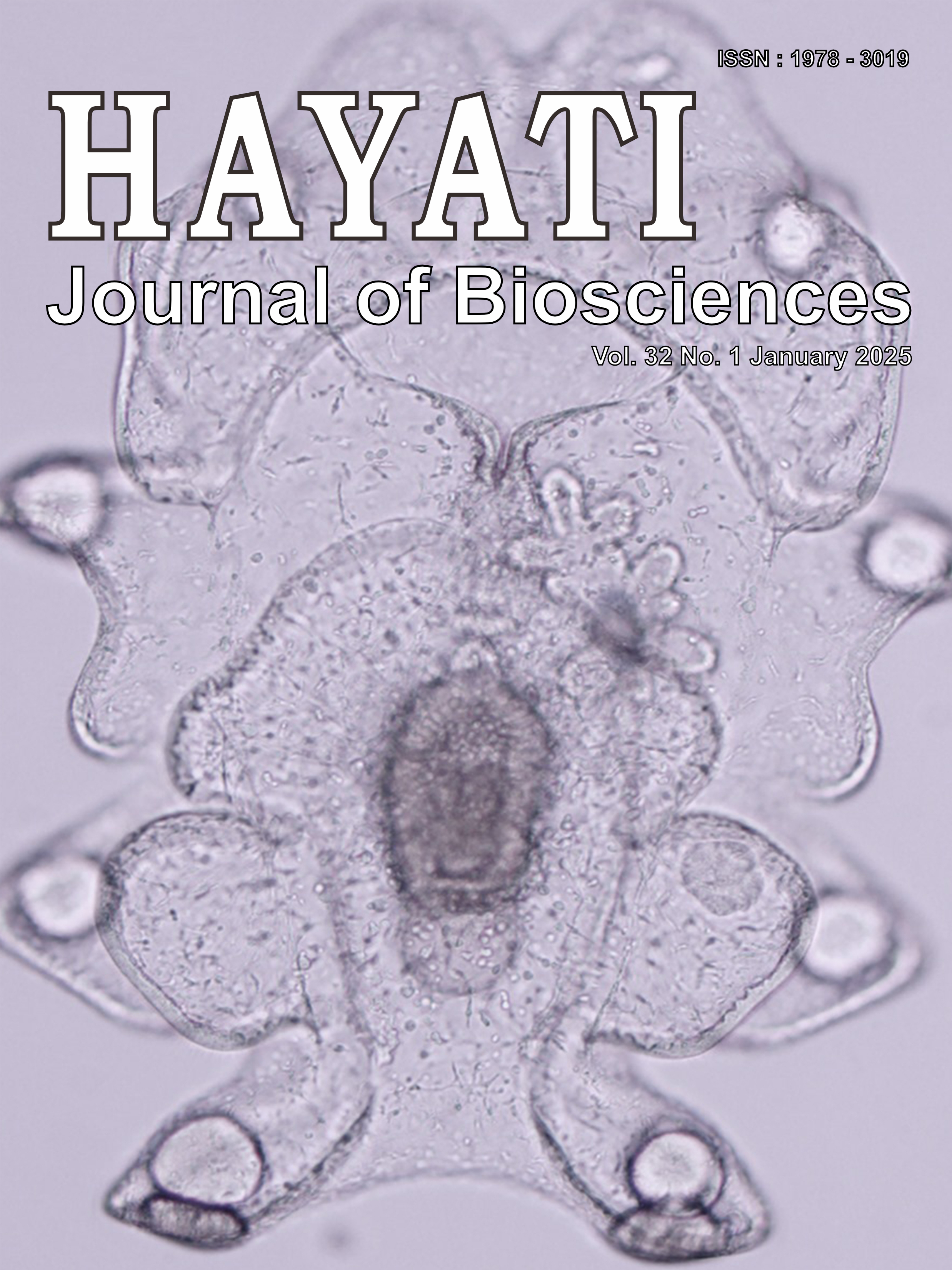The Potency of Centella asiatica Leaf Extract on VEGF Expression and Angiogenesis in Second-Degree Burn Wound in Mice
Abstract
Burn injuries present a significant global health challenge, with the highest incidence rates reported in Southeast Asia, including Indonesia. Healing burn wounds is a complex and dynamic process involving various cellular and molecular mechanisms, prominently featuring the role of Vascular Endothelial Growth Factor (VEGF) in tissue regeneration and wound repair. VEGF is crucial for inducing and regulating angiogenesis and supplying oxygen and nutrients to the healing tissue. This study aims to evaluate the potential of pegagan (Centella asiatica) leaf extract cream 1%, 3%, and 5% daily for 14 days in enhancing VEGF expression and angiogenesis in second-degree burn wounds in mice (Mus musculus). This study investigates the application of C. asiatica extract cream on second-degree burn wounds in mice, comparing its effects on VEGF protein expression and angiogenesis to those of base cream and silver sulfadiazine cream, with outcomes evaluated using immunohistochemistry (IHC) and hematoxylin and eosin (HE) staining methods. Our findings suggest that C. asiatica extract cream promotes reduced burn wound size, significant upregulated VEGF expression, and enhanced angiogenesis in treating burn wounds compared to positive control, with a 5% dose having the best result. The study concludes that C. asiatica extract cream may effectively treat burn wound healing through enhancing VEGF expression and angiogenesis.
Downloads
Copyright (c) 2025 Frederick Surya Utoyo, Wahyu Widowati, Hana Ratnawati

This work is licensed under a Creative Commons Attribution-NonCommercial 4.0 International License.
HAYATI J Biosci is an open access journal and the article's license is CC-BY-NC. This license lets others distribute, remix, tweak, and build upon author's work, as long as they credit the original creation. Authors retain copyright and grant the journal/publisher non exclusive publishing rights with the work simultaneously licensed under a https://creativecommons.org/

























.png) IPB University
IPB University Department of Biology
Department of Biology The Indonesian Biological Society
The Indonesian Biological Society 

